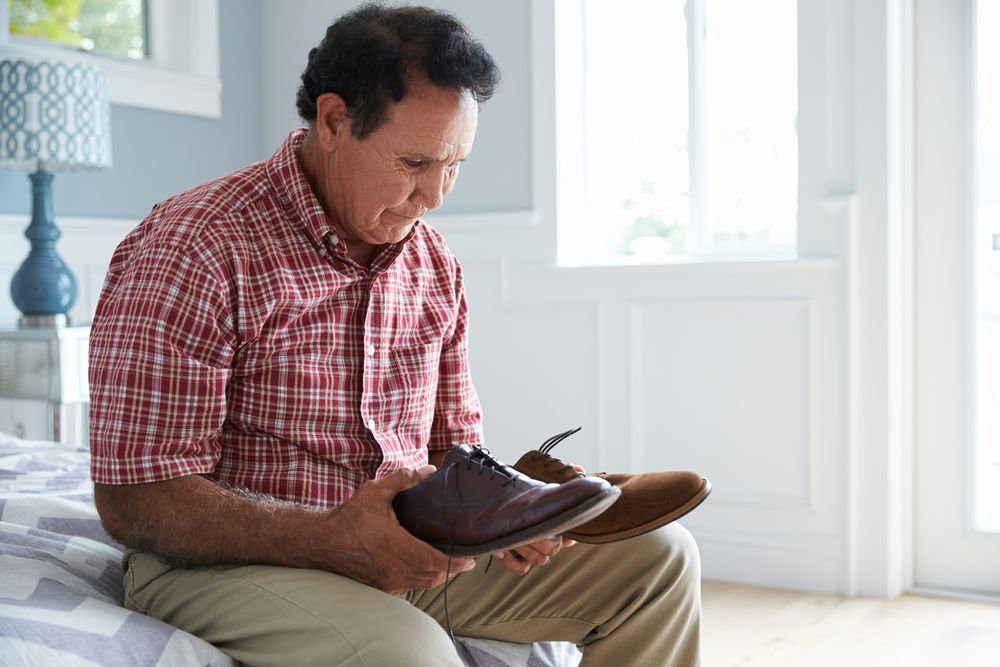Older Adults and HIV: Don't Underestimate Risk
One in 6 new HIV diagnoses occurs in people over age 50. Are you routinely asking your older patients about their sexual history?
©MonkeyBusinessImages/Shutterstock.com

An increasing proportion of older adults live with HIV infection, and they require different treatment than younger patients, according to a new study.
Newly acquired HIV infections continue to occur in older people, and those with known HIV infection are living longer. Currently, more than half of all people living with HIV in the US are aged 50 and older, and about 1 in 6 new HIV diagnoses occurs in people aged 50 and older, according to state researchers led by senior author Jonathan S. Appelbaum, MD, of Florida State University College of Medicine in Tallahassee, FL.
Healthcare professionals often underestimate the level of sexual activity of older adults and their risk of sexually transmitted infections. What’s more, many symptoms of early HIV infection mimic those of aging and may be difficult for practitioners to differentiate. The researchers suggest that clinicians routinely ask about sexual history and symptoms and provide safe-sex counseling for older adults and their partners at every visit.
“With inaccurate perception of HIV exposure risk and symptom mimicry, underdiagnosis and late diagnosis of HIV infection are common in older adults,” the researchers state.
They suggest that clinicians use the Veterans Aging Cohort Study (VACS) Index to routinely monitor indicators of HIV disease, and general indicators of organ system injury. The Index’s measures of frailty and physical function have been shown to correlate with advanced HIV disease and mortality.
The researchers outline special considerations needed for problem-based management of those with HIV who are age 50 and older.
Immunizations. Live attenuated varicella vaccination (approved in adults aged 50 and older without HIV) can be given to adults with HIV who lack evidence of immunity and who have CD4 counts of 200 cells/μL or greater.
High blood pressure. Strict blood pressure control is especially warranted in older adults with HIV, who are at risk of metabolic diseases, stroke, and acute myocardial infarction.
Diabetes. The American Academy of HIV Medicine and the American Geriatrics Society recommend a target glycosylated hemoglobin of 8% for older frail adults with HIV who have less than a 5-year life expectancy, who are at high risk of hypoglycemia, or who are at high risk of polypharmacy.
Osteoporosis. Certain lifestyle and HIV-related factors put individuals with HIV at higher risk of osteoporosis, including smoking, alcohol abuse, glucocorticoid therapy, low physical activity, immune dysfunction, persistent inflammation, and side effects of antiretroviral medications.
Malignancy. Older adults with HIV should continue to be screened for AIDS-related malignancies. This includes Pap tests in women with HIV at initiation of care, at 6 months, and then annually thereafter if results are normal. Men who have sex with men, women with a history of receptive anal intercourse or abnormal Pap test results, and all those with HIV with genital warts should receive anal Pap tests annually.
Neurocognitive disorders. Cognitive impairment in individuals with HIV is associated with older age and lifestyle and HIV-related risk factors. Individuals with HIV are susceptible to HIV-associated neurocognitive disorders and other causes of cognitive impairment common to individuals without HIV, such as Alzheimer's and vascular dementia.
The researchers published their results in the November 2016 Journal of the American Geriatrics Society.
IDWeek 2023: New Data Provide Closer Look at Real-World Utilization of Cabotegravir for HIV PrEP
October 15th 2023IDWeek 2023. New study found just slightly more than half of prescriptions for cabotegravir for HIV PrEP resulted in at least 1 injection, suggesting limitations in use and access to the injectable HIV integrase inhibitor.
Common Side Effects of Antiretroviral Therapy in HIV Infection
February 7th 2013What are some of the more common side effects of antiretroviral therapy, and what can the primary care physician do to help manage these effects? In this podcast, infectious disease expert Rodger MacArthur, MD, offers insights and points readers to updated comprehensive guidelines.